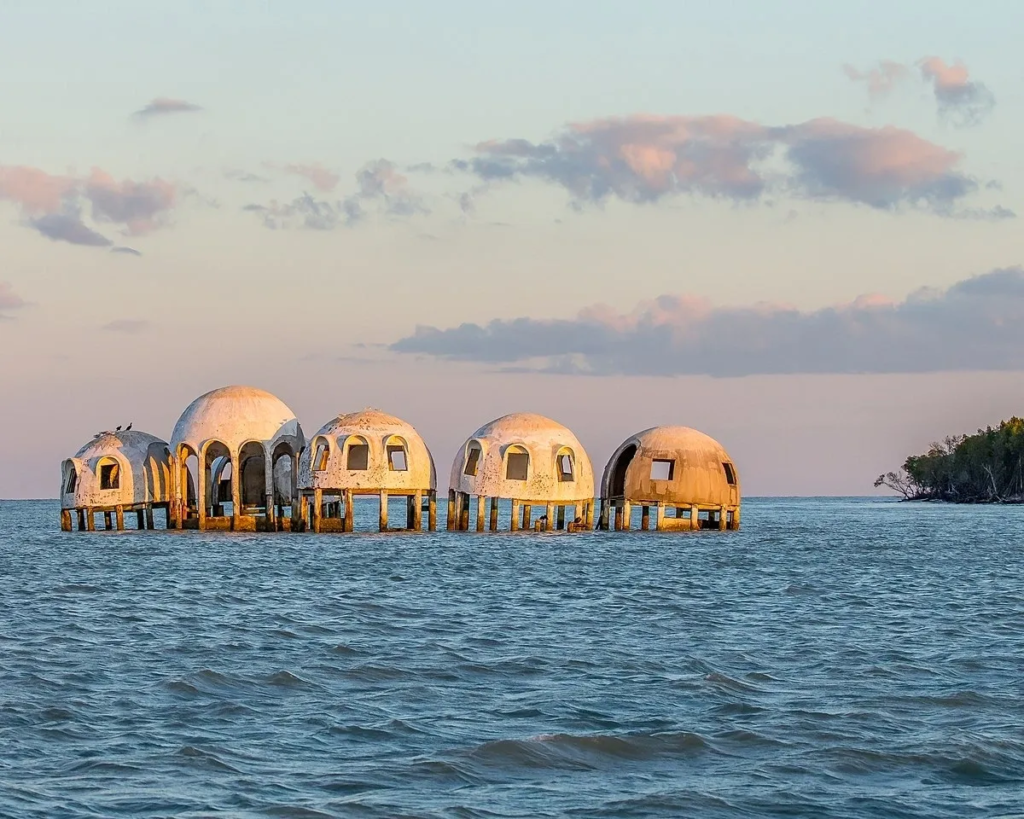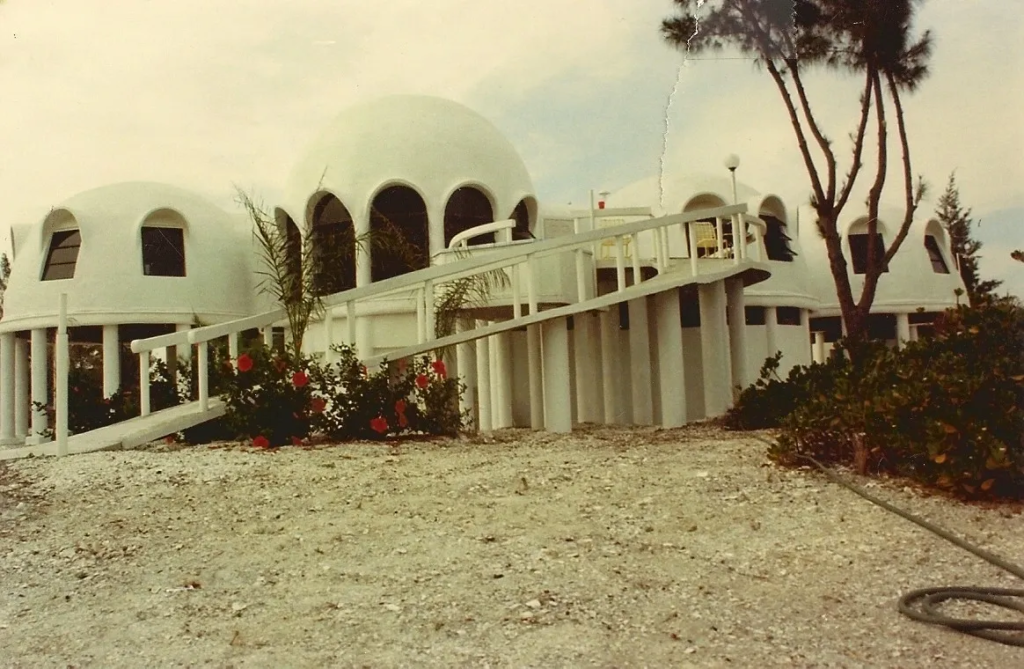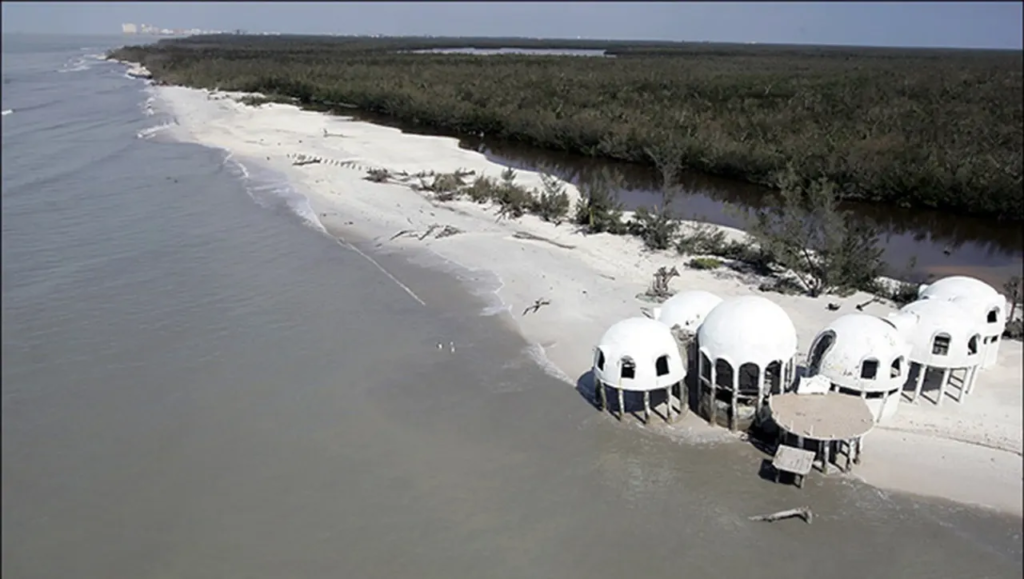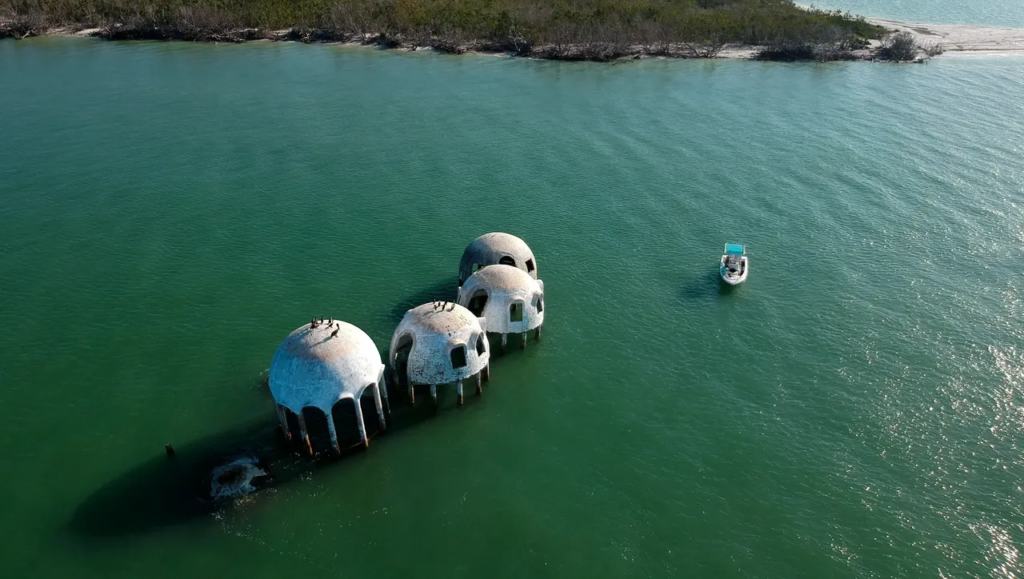The Cape Romano Dome House was a visionary project designed by retired oil producer Bob Lee in 1982. It is a remarkable building made up of six dome-shaped modules sitting on stilts. Located in Florida’s Ten Thousand Islands, close to Cape Romano Island, this distinctive residence demonstrated Lee’s creative approach to sustainability and architecture.

After purchasing land on Morgan Island, Lee had an idea for a unique holiday getaway that gave rise to the dome home. The multi-level, interconnecting domes in the design created roomy, open living areas. Lee’s granddaughter Jane Maples recalls his spirit of adventure and inventiveness with fondness, citing how they shaped the design and usefulness of the entire house.
The dome home was unique in that it was self-sufficient. The ecologically friendly house was powered by solar panels, which produced clean, renewable energy, and collected and treated rainwater for use in different domestic applications. When it was finished in 1982, the Lee family used it as a treasured holiday home before deciding to make it their permanent home.

The dome home faced difficulties despite its sturdy construction, most notably during Hurricane Andrew in 1992, which seriously damaged the inside. In the end, the family was forced to leave the house even though the main structure held together. The Cape Romano Dome House’s ruins now serve as a memorial to Bob Lee’s vision and the precarious equilibrium between human ingenuity and the forces of nature.

The Cape Romano Dome House faced several challenges throughout time, including coastal erosion and rising water levels. Bob Lee sold the property to John Tosto in 2005, and Tosto had grand ambitions for its renovation. Tosto moved the home to a higher elevation in order to protect it from the elements and maintain its distinctive design, even though it was advised that a seawall be constructed.

But in 2005, Hurricane Wilma’s fury made matters worse by undermining the foundation of the house and impeding Tosto’s attempts to relocate. Progress was further hampered by bureaucratic red tape and problems obtaining permits, which resulted in a demolition order issued by the Collier County Code Enforcement Board in 2007 because of safety concerns. Tosto attempted to challenge the ruling, offering proof of the house’s possible repairability among other things, but the demolition order stood.

Even though Tosto had invested a lot of money in the project by 2009, the mansion was unusable since the pillars supporting the domes were now underwater. When neglected, the building was reduced to a forgotten relic that was periodically visited by fishermen and interested residents. A startling discovery in 2013 showed that the ruins had become a vibrant reef teeming with aquatic life.

